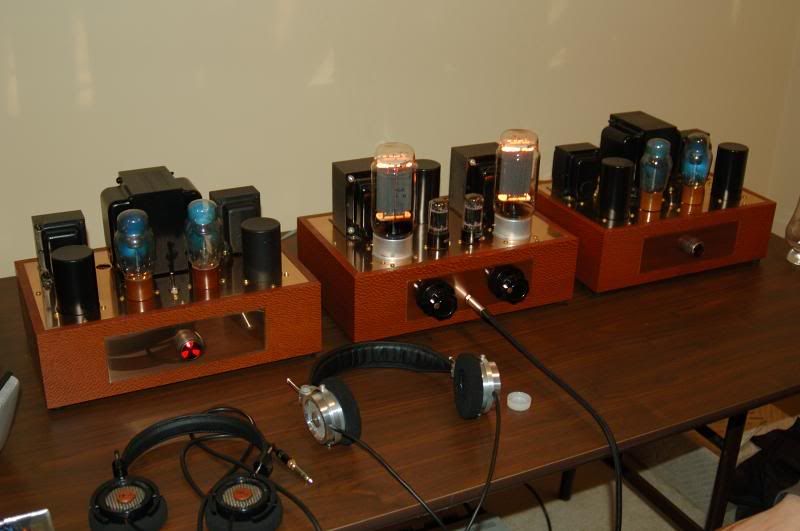DIY falls behind in the casing options. Most of us don't have the tooling to make really professional grade cases and are not able to order in quantity, either, so commercial options are out. The amp I'm picking at right now (
HeadWize - Project: Brute Force In A Line Stage by Eric Barbour) has consumed a huge amount of time in casing. I've put about 25-30 hours in so far, just laying out the parts and using a square and scribe to mark the main plate. I should have the measurements and scribing done tonight and should hit the drill points with the auto centering punch tomorrow. But there are about 100 holes that need to be drilled and six cutouts to be made, along with the sides, horizontal aluminum side fins (
), chassis punching, and eventually dropping it off to get powdercoated. I'm not going to paint this one. A layout shot from a few days ago:
There are more scribings and notes on it now, but it's been a lot of work to get everything lined up and marked for drilling and cutting. I'll probably have 100 hours into this before the soldering iron is turned on.
Anyhow, my point is that commercial designers can do this just once with professional tools then have a few hundred chassis rolled off. I have to go through it for each and every amp I build.
Another important point is with the cost of components. I picked out the parts for this individually and spent what I wanted. Not quite true for commercial designs. They usually have a price target to meet and keep a closer eye on the components. For example, if the parts I want for this amp ran $50 over budget, that's not that big of a deal. But if you're building 500 of these, an extra $50 per unit is $25,000 off the bottom line. You can't keep increasing the price to compensate, especially when competitors know how price sensitive buyers are. So unless you're on a strict budget, you can use parts that only the most expensive commercial amps use.
The same is true with build quality. For instance, I'm going to put spaghetti on every lead in this amp. That'll take me an extra hour or two. Again, if you're building 500, or even 100, an extra two hours per unit is going to add up fast. Especially when you have orders pending and deposits received. Hiring a good tech to do it will also take off the bottom line. Same with the star ground I'm going to use - a grounding bar would save a lot of time during the build, but I don't mind the time it will take to put one in.
Further, component availability isn't always there for large orders. If you look at the photo, I've got a vintage faceted green glass power light. I was only able to get six of those, so I wouldn't be able to put that into production. Same with the vintage aluminum volume knob there. I think a vintage glass and chrome light is much better than a $1.80 LED, and the aluminum knob is better than a new plastic one.
As for the designs themselves, I think the DIY designs are better generally speaking. Commercial designs are almost always proprietary and there's not much encouragement for third parties to modify and redesign them. DIY, on the other hand, benefits from "many eyeballs." If there's a problem with a design, someone is likely to spot it and tell the author. That usually results in a correction. Commercial designs aren't usually picked over by fellow geeks, so flaws aren't always spotted. That isn't to say that commercial designs are bad (many are wonderful) but that corrections and improvements are much more likely with DIY.
Also, DIY tends to push the envelope with more radical and unusual designs that the market might not be ready for. I've been gathering parts for an 832A based amp. The 832A is kinda weird and unknown to most. Even I didn't know much about it until I came across a NOS JAN 832A stash and bought it. I found a couple designs I could use and will put one together after I finish this one and the next project, a Ciuffoli SESS using the 417A. The point being that almost no one else will get to listen to an 832A except for DIY people. If mine is well received at meets, some others might build one, and eventually, there might be a commercial model. But that would be years off, while I'd get to enjoy one now.
P.S. The amp
should be up and running in a few weeks. Yes, it will be at CanJam '09 and I am taking photos throughout the build. I will post them with a writeup on building an amp from scratch.







